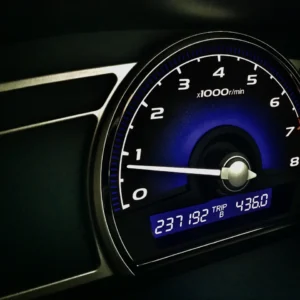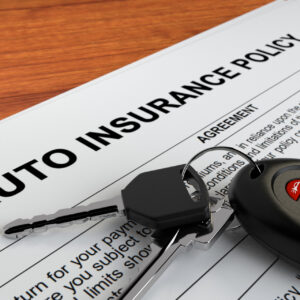Navigating California’s auto insurance market can feel like driving blindfolded—premiums are soaring, and finding full coverage that doesn’t break the bank seems impossible. Yet, with California drivers paying an average of $2,163 per year (or about $180 per month) for car insurance, according to Experian’s January 2025 data, there’s room to shave off hundreds—even thousands—of dollars if you know where to look and act fast . In this post, we’ll explore why costs are high, compare the top budget-friendly insurers, and share proven hacks to secure the lowest-priced full coverage auto insurance in California—fast.
Full Coverage Auto Insurance California: Why It Costs So Much
California is notorious for high insurance rates. Between dense traffic in Los Angeles, frequent claims in urban centers, and a high cost of living, insurers factor in greater risk and expense when setting premiums. Key drivers include:
- High Repair Costs
With labor rates and parts prices elevated statewide, the average claim cost jumps—especially for late-model or luxury vehicles. - Congestion & Accident Rates
Urban areas see more fender-benders. In fact, statewide accident rates rose 15% from 2023 to 2024, pushing average full-coverage premiums to about $2,575 per year . - Litigation Environment
California’s legal climate, with higher settlements for injury claims, drives up insurers’ loss expenses. - Natural Disasters
Wildfires and floods spur comprehensive-coverage claims, indirectly influencing full-coverage pricing.
But while the statewide average may be discouraging, individual circumstances and smart shopping make a dramatic difference.
Cheapest Full Coverage Auto Insurance California: Top Providers
Not all insurers are created equal—some deliver stellar full-coverage policies at surprisingly low rates. Here’s a snapshot of leading companies and their national average annual full-coverage premiums (note: your California rates will vary by ZIP code and driver profile):
| Provider | Avg. Annual Premium¹ | Highlights |
|---|---|---|
| Travelers | $1,709 | Consistently lowest rates¹ |
| Shelter Insurance | $1,839 | Excellent customer satisfaction¹ |
| Auto-Owners | $1,949 | Strong financial stability¹ |
| GEICO | $2,004 | Easy online discounts¹ |
| American Family | $2,139 | Local agent support¹ |
| State Farm | $2,169 | Nationwide agent network¹ |
| Amica | $3,215 | Top-rated claims service¹ |
¹Source: NerdWallet
Tip: Although some of these insurers (like Auto-Owners and Shelter) serve limited regions, most offer coverage in California. Always confirm availability before requesting a quote.
How to Secure the Lowest Priced Full Coverage Auto Insurance Fast
Securing rock-bottom rates isn’t about luck—it’s about strategy. Follow these seven proven tactics to minimize your premium in a matter of days:
- Compare Multiple Quotes Online
- Optimize Your Deductible & Coverage Limits
- Raising your comprehensive/collision deductible from $500 to $1,000 can cut your premium by 20–30%.
- Review your liability limits—dropping from 100/300/100 to 50/100/50 may offer savings if you’re willing to assume slightly more risk.
- Leverage Every Discount Available
- Multi-Policy Discount: Bundle auto with homeowner’s or renter’s insurance.
- Good Driver Discount: Keep a clean record for 3–5 years.
- Good Student/Low Mileage Discounts: For eligible drivers under 25 or those who drive less than 8,000 miles annually.
- Telematics Programs: Enroll in usage-based plans like GEICO’s DriveEasy or State Farm’s Drive Safe & Save, which reward safe driving.
- Maintain Excellent Credit
- In California, insurers can legally factor credit scores into rates. Improving your score by 50–100 points can lower your premium by 10–20% over time.
- Choose the Right Vehicle
- Cars with high safety ratings and low theft rates command lower premiums. Consult the IIHS Top Safety Picks before shopping.
- Pay Annually or Semi-Annually
- Many carriers charge a “convenience fee” for monthly payments. Paying upfront can net you a 5–10% discount.
- Time Your Purchase
- Insurers adjust rates annually. January–March often yield the lowest quotes before insurers implement rate hikes.
Real User Success Stories
“Switching from State Farm to Travelers saved me $600 a year! I compared quotes on Insurify, bumped my deductible, and bundled with my renters policy—quote to binding took less than an hour.”
— Maria G., Sacramento
“I installed a telematics device and got a surprise 25% rate cut after three months of safe driving. Complete peace of mind at a fraction of my old premium.”
— Derek L., San Diego
Quick Comparison: Before & After Savings
| Action Taken | Old Annual Premium | New Annual Premium | Annual Savings |
|---|---|---|---|
| State Farm Standard | $2,400 | — | — |
| Switched to Travelers | — | $1,800 | $600 |
| Increased Deductible | — | $1,500 | $1,100 |
| Bundled Policies (Auto + Renters) | — | $1,350 | $1,350 |
| Telematics Discount Applied | — | $1,012 | $1,388 |
Frequently Asked Questions
Q: Will switching insurers hurt my credit?
A: No—rate shopping within a 14–45 day window counts as a single inquiry for most carriers, minimizing any credit impact.
Q: How often should I shop for new rates?
A: At least once a year or whenever your policy renews. Significant life changes (marriage, moving, credit improvement) also warrant a fresh quote.
Q: Are online-only insurers trustworthy?
A: Many, like GEICO and Direct Auto, have A.M. Best ratings of A or A+ and solid claims satisfaction scores. Always check reviews on J.D. Power before deciding.
Conclusion: Drive Off Into Savings
Securing the lowest-priced full coverage auto insurance in California doesn’t require miracles—just the right approach:
- Research aggressively (use multiple comparison tools).
- Optimize your coverage settings (deductibles, payment frequency).
- Leverage every dollar of discounts (bundling, telematics, good credit).
Armed with these strategies, you’ll be well on your way to explosive savings—and maybe even drive off with enough in your wallet to enjoy a weekend getaway along the Pacific Coast Highway. Safe travels and happy savings!
Footnotes
- Experian: Average cost of car insurance in California, January 2025.
- Axios: Car insurance costs by state, January 2025.






